This pristine game reserve, in the Sabi Sands, South Africa, set the stage for the magical action.
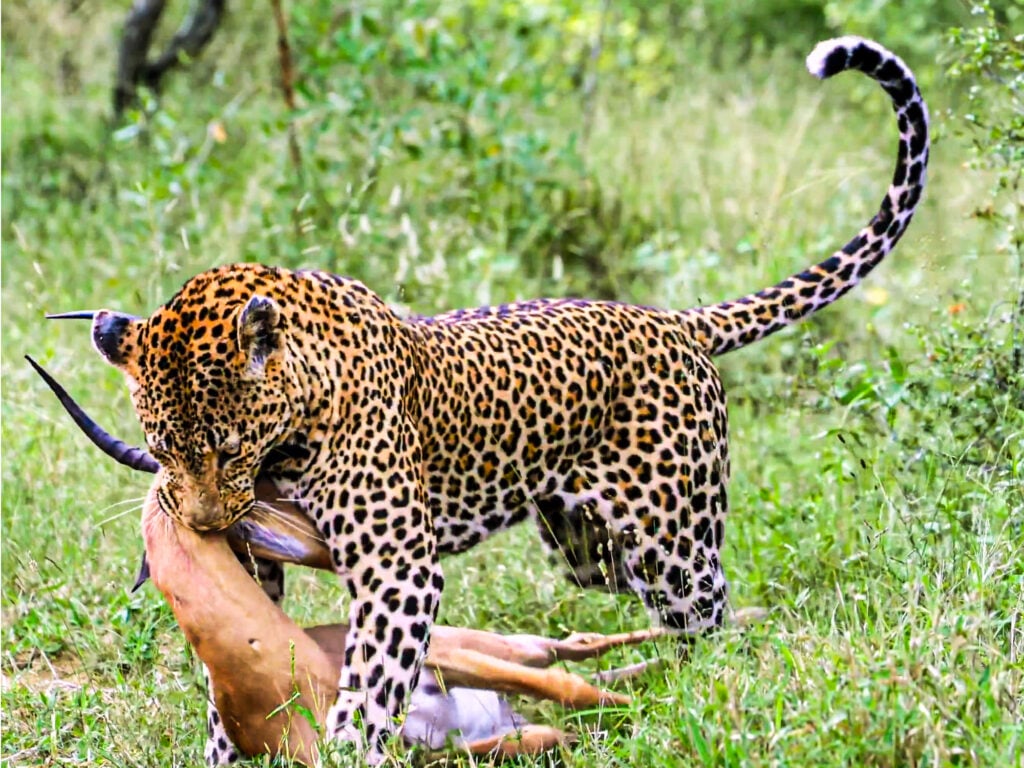
Neil Jennings related the story to Latest Sightings, speaking of how he had spotted Ravenscourt resting in the thick grass off the side of one of the reserve’s sand roads at midday. This is the time when the sun is at its highest, and with the sun directly overhead, animals often seek out the shade for relief from the heat.
Ravencourt was among the animals seeking refuge in the cool of a thicket of bushes and trees.
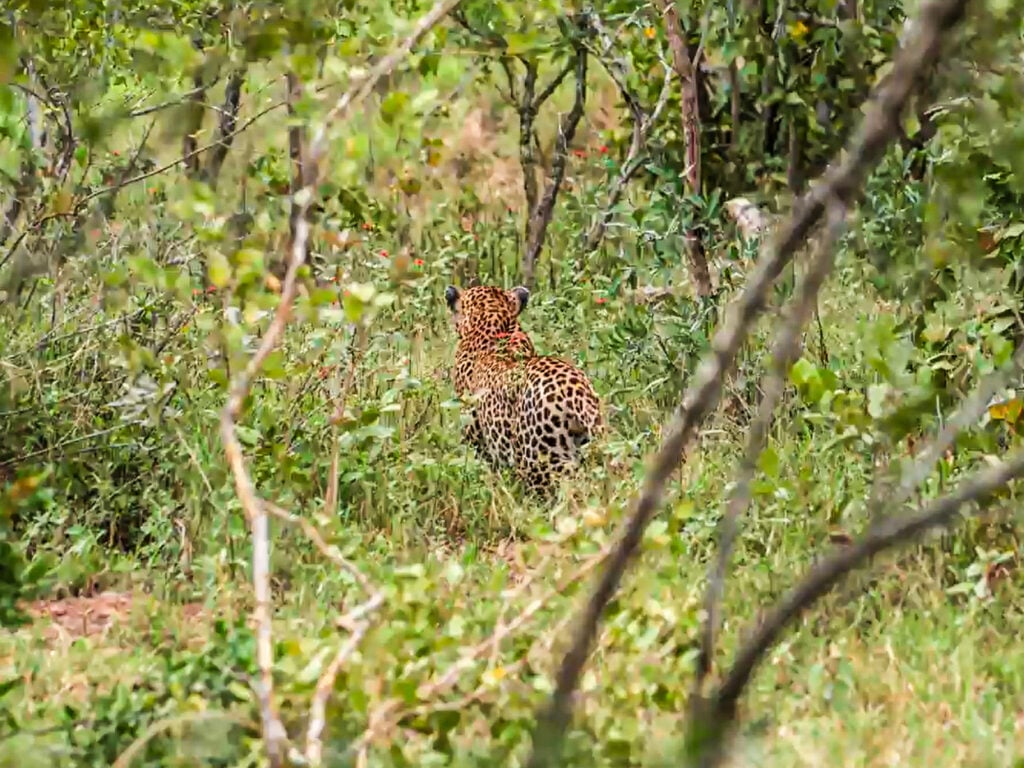
Leopard stalks impala
Neil said there were impala nearby which strutted about the bush, grazing with all fervency. He said he and his fellow game viewers thought that the antelope might accidentally run right into Ravenscourt’s hiding spot.
Get our Best Sightings as they Come in
However, the leopard was too cautious and remained hidden. He had everything on his side at this moment. His rosette spots kept him camouflaged and his taught, strong muscles were ready for action.
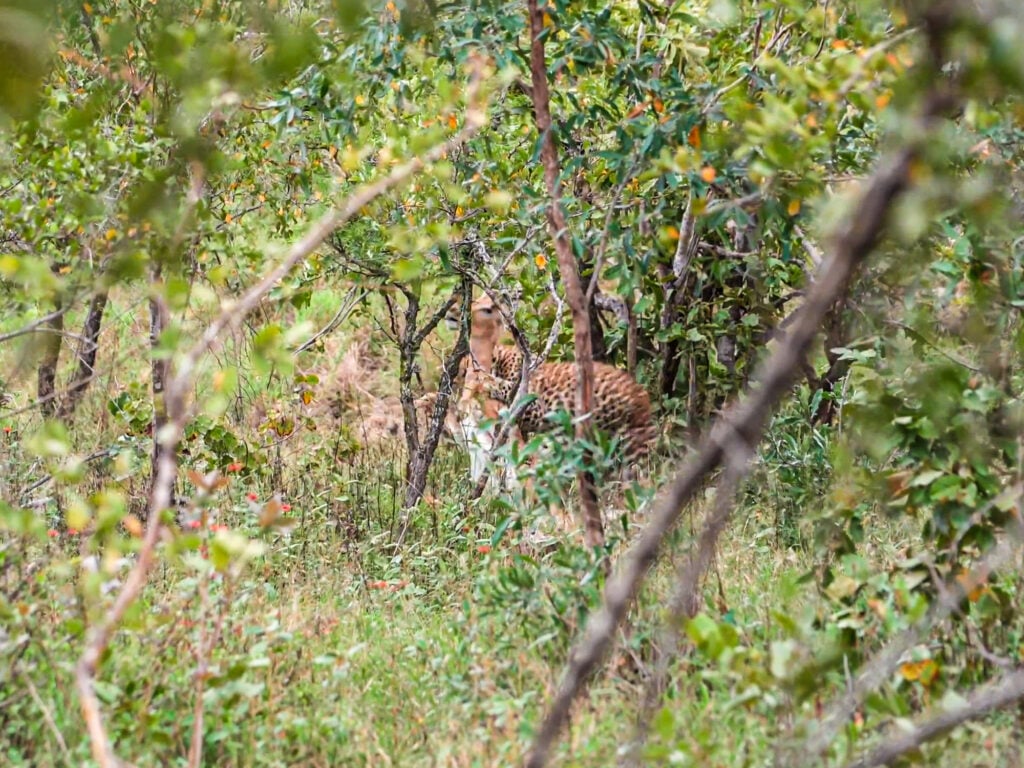
Leopard lies in waiting
He had in mind to ambush one of the impala rams, but remained hidden as he waited for the perfect moment. Leopards often employ these well-executed ambushes to take down their prey.
As ambush predators, they prefer to stalk their prey and get as close as possible before attacking. They use dense vegetation, rocks, or terrain features for cover and crawl close to the ground, with silent, precise moves. They will often wait until they are within five to ten metres before launching an attack.
Their spotted coat helps them blend seamlessly into their surroundings, making them nearly invisible to unsuspecting prey.
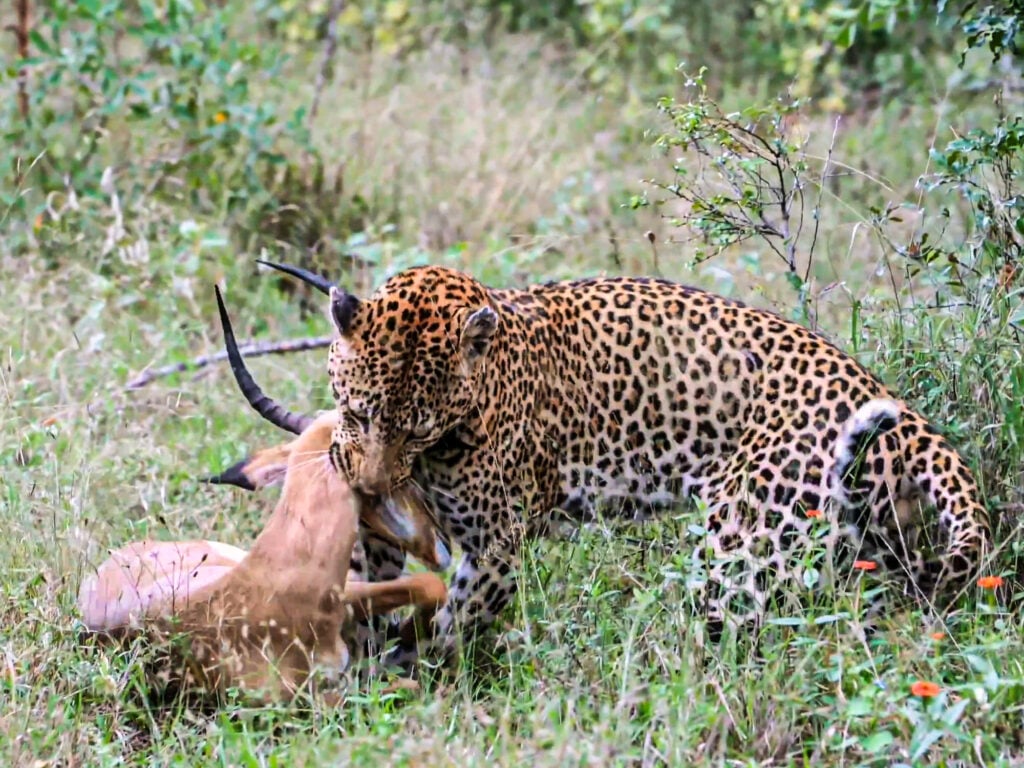
Leopard goes for the kill
Once in striking range, the leopard will explode with speed, leaping at its prey in a powerful burst. It aims for the neck or throat with a precise bite, often targeting the windpipe or spinal cord to suffocate or instantly immobilise the animal.
In some cases, particularly with smaller prey, it may bite through the skull or crush the neck vertebrae. The leopard’s strong jaw muscles and sharp canines are perfectly suited for a fast, clean kill.
This impala ram didn’t suspect a thing, until the leopard had caught it in its jaws. The leopard bit into its neck, ending its life.
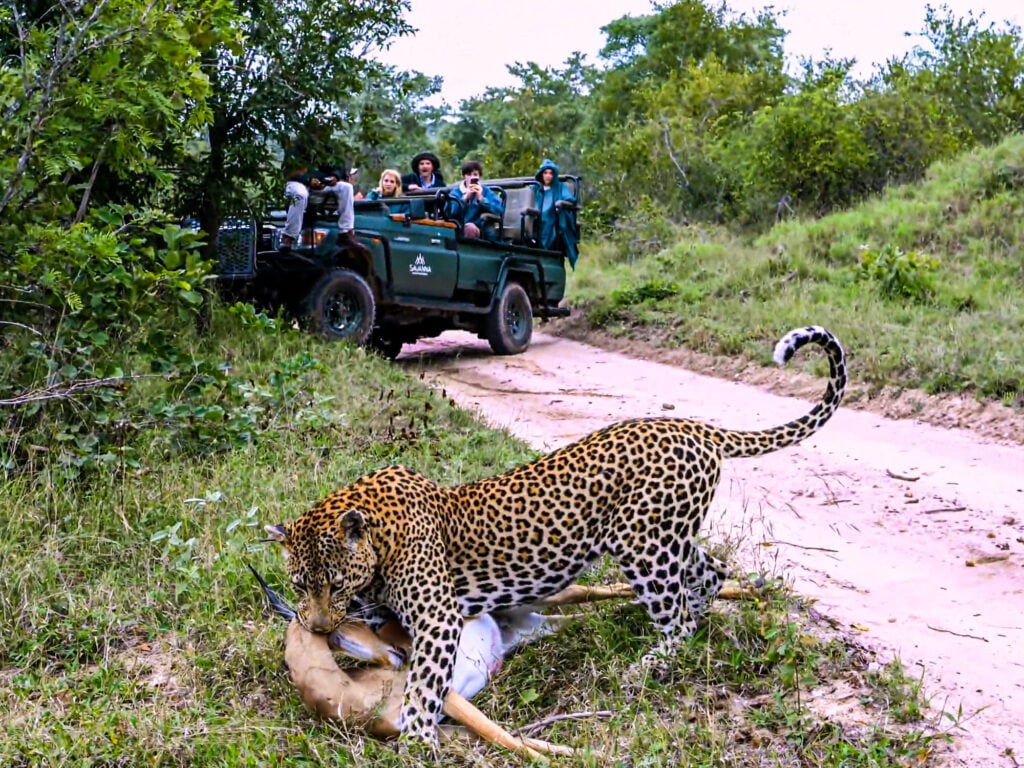
A mighty display of fine hunting
This was a magnificent display of one of nature’s most feared hunters. The leopard remained close to the viewers and they watched from open back vehicles, no doubt just a little fearful with the predator so close!
However, it appeared his attention was completely focused on the impala which he had just caught. This catch would give him enough energy to sustain him for the next few days.
Leopards eat their prey in parts, often starting with softer internal organs and then moving on to the flesh. They may cover uneaten portions with leaves or grass to hide it from other predators. After feeding, they rest in trees or hidden spots nearby.
